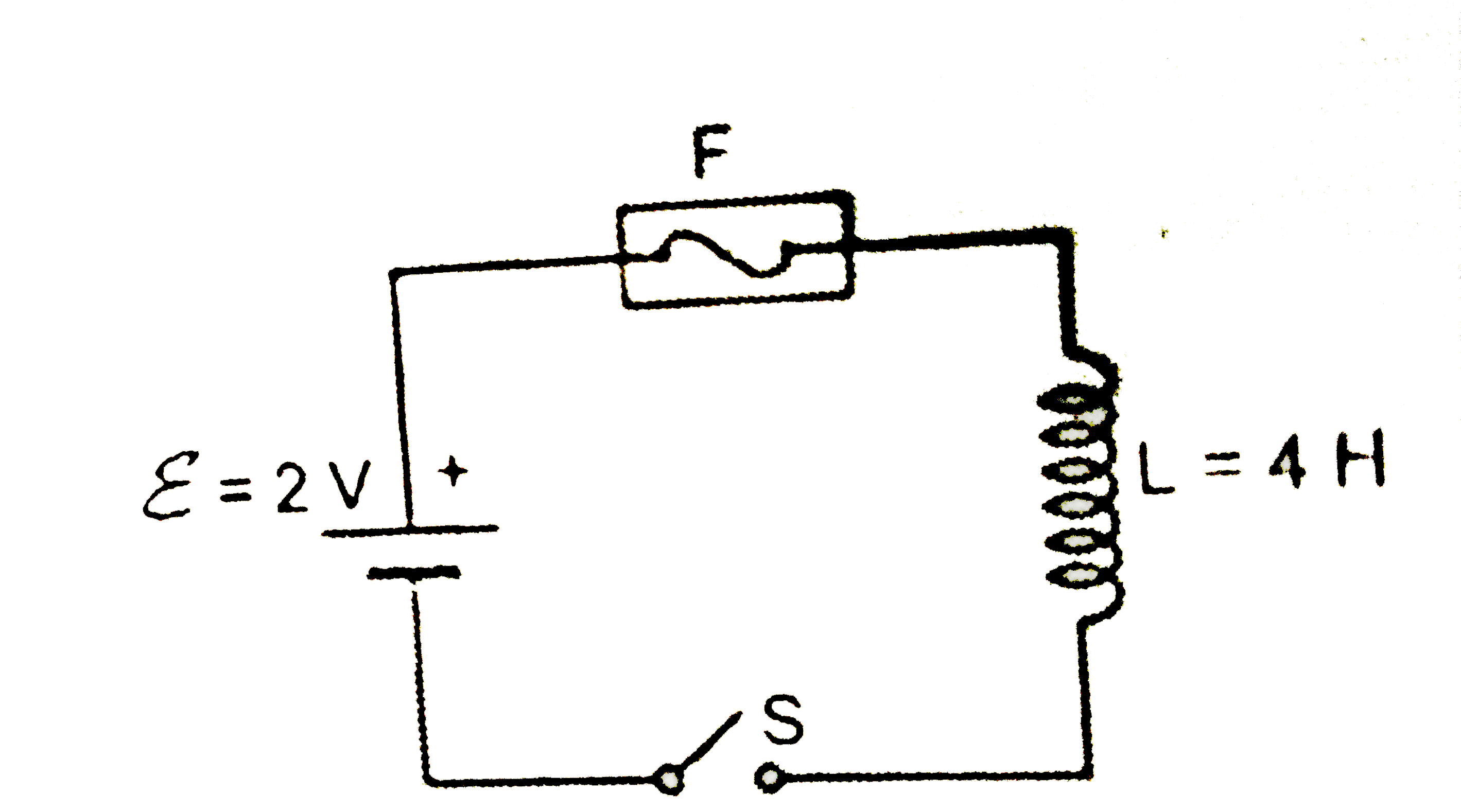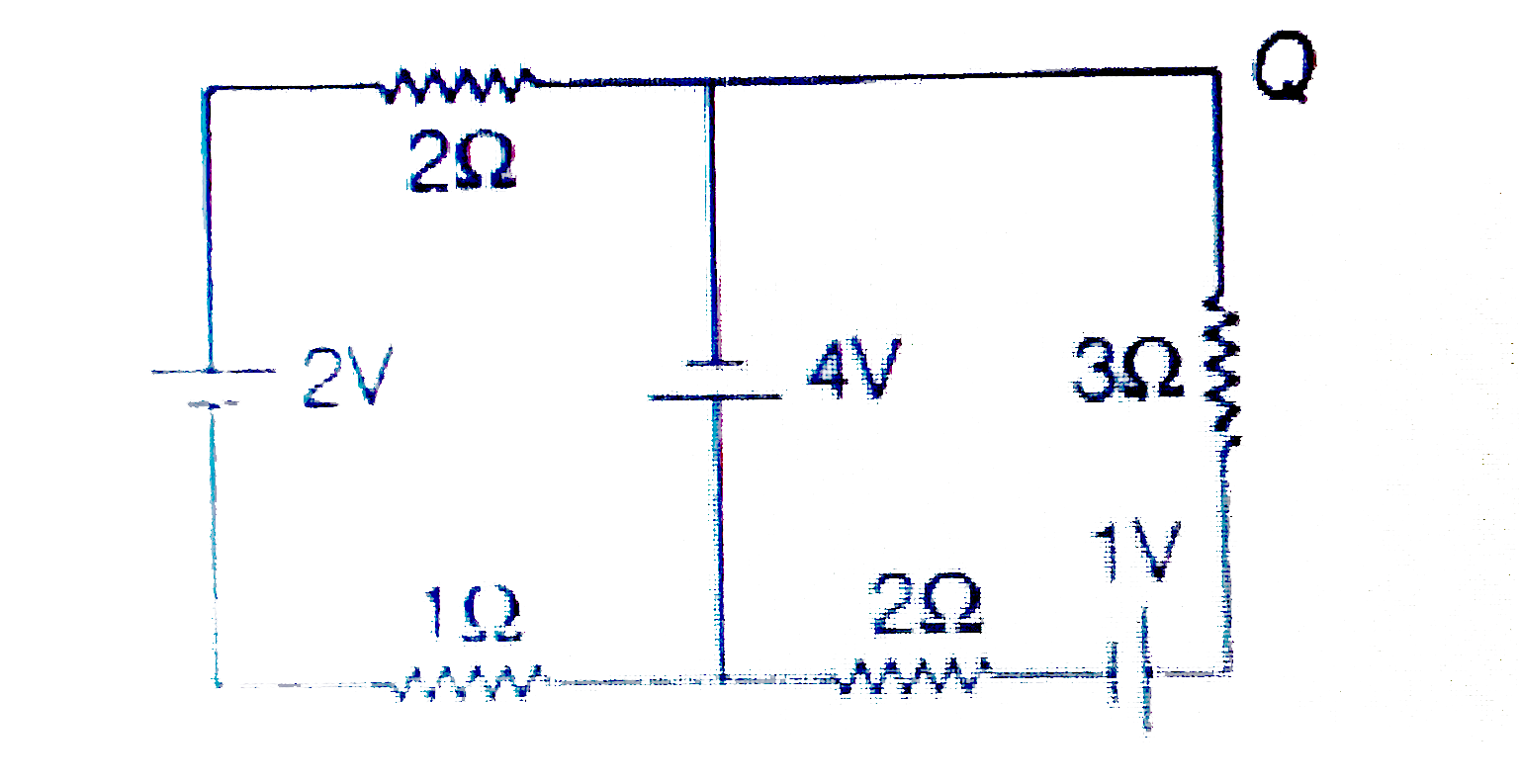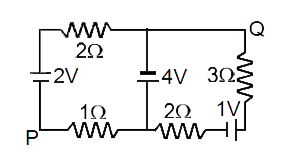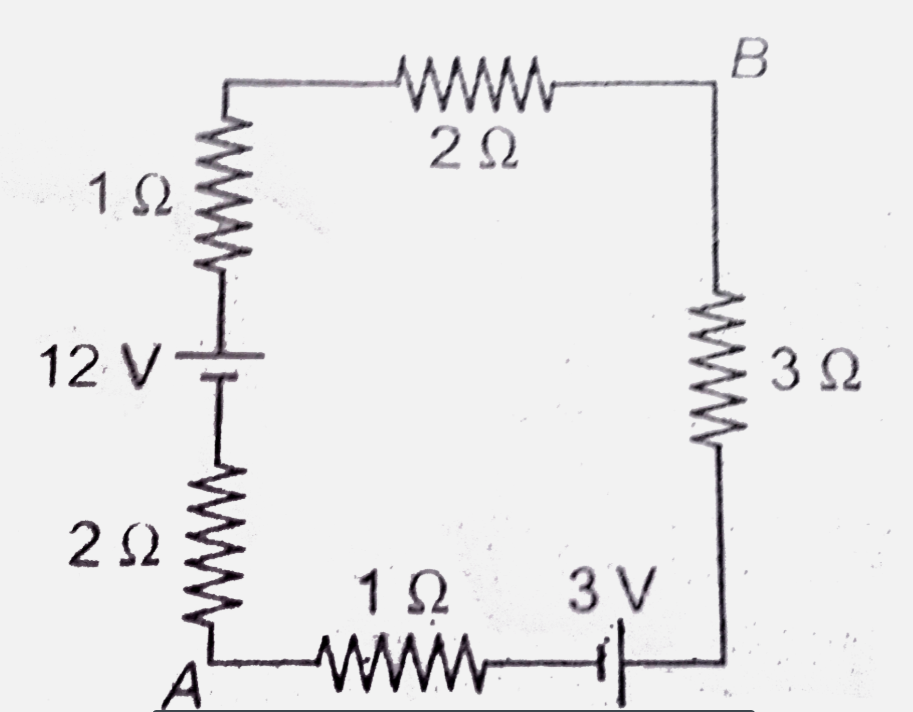The network shown in the figure is a part of complete circuit. What is the potential difference VB−VA when the current I is 5A and is decreasing at a rate of 103A/s?

5V
10V
15V
20V
The correct Answer is:C
By using kirchhoff's voltage law

VA−iR+E−Ldidt=VB⇒VB−VA16 volt.
Topper's Solved these Questions
- BOOK - A2ZCHAPTER - ELECTROMAGNETIC INDUCTIONEXERCISE - Applications Of Emi58videos
ELECTROMAGNETIC INDUCTION
- BOOK - A2ZCHAPTER - ELECTROMAGNETIC INDUCTIONEXERCISE - Problems On Mixed Concepts37videos
ELECTROMAGNETIC INDUCTION
- BOOK - A2ZCHAPTER - ELECTROMAGNETIC INDUCTIONEXERCISE - Motional And Rotational Emf95videos
ELECTROMAGNETIC INDUCTION
- BOOK - A2ZCHAPTER - ELECTRIC POTENTIAL & CAPACITANCEEXERCISE - Section D - Chapter End Test29videos
ELECTRIC POTENTIAL & CAPACITANCE
- BOOK - A2ZCHAPTER - ELECTROMAGNETIC WAVES AND COMMUNICATION SYSTEM EXERCISE - Section D - Chapter End Test30videos
ELECTROMAGNETIC WAVES AND COMMUNICATION SYSTEM
Similar Questions
Knowledge Check
- Question 1 - Select One
In the circuit shown, what is the potential difference VPQ?
 A+3VB+2VC−2VDnone
A+3VB+2VC−2VDnone - Question 2 - Select One
The network shown in the figure is part of a complete circuit. If at a certain instant, the current I is 5A and is decreasing at a rate 103A/s then VB−VA is
 A20VB15VC10VD5V
A20VB15VC10VD5V - Question 3 - Select One
In the circuit shown, what is the potential different VPQ ?
 A+3VB+2VC−2VDNone of these
A+3VB+2VC−2VDNone of these
In the circuit (Fig.) what is potential difference VB−VA (in V) when current I is 5A and is decreasing at the rate of 103As−1
 View Solution
View SolutionIn the circuit shown , what is the potential difference VPQ?
 View Solution
View SolutionThe network shown in the figure is a part of a copmplete circuit. If at a certain instant, the current i is 5A and decreasing at the rate of 103As, then Vs−VA (in volt) is
'(##CEN_KSR_PHY_JEE_CO23_E01_022_Q03##)'View SolutionPotential difference VB−VA in the network shown is
 View Solution
View SolutionThe network shown in the figure is part of a complete circuit instant the current (I) is 5A and is decreasing at a rate of 103 A s−1, then the value of VB−BA is
 View Solution
View Solution


